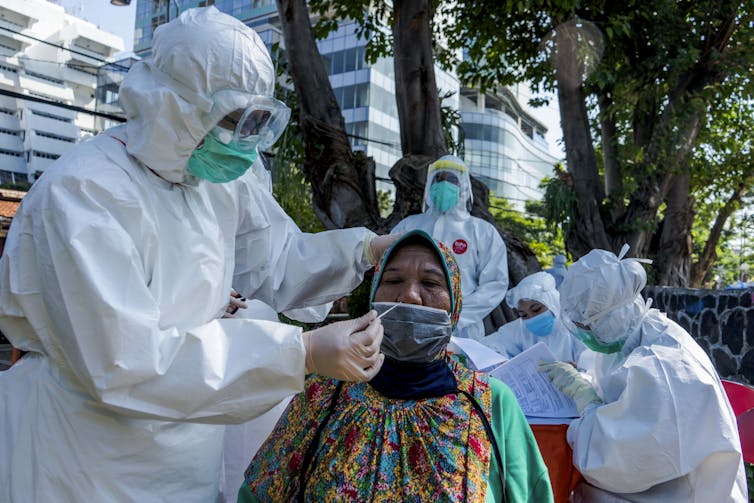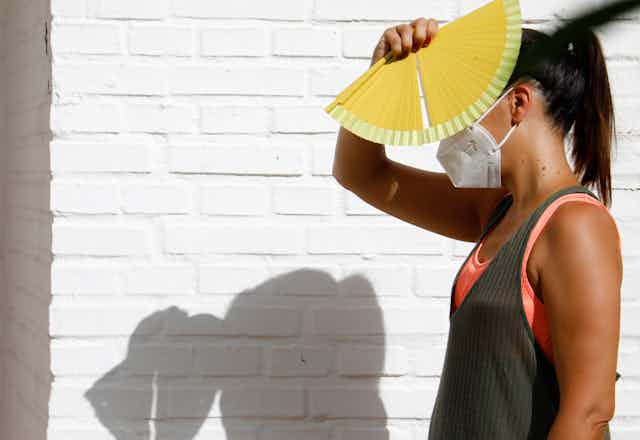Many people believe that warm weather protects us from respiratory illnesses such as COVID-19. The concept of “catching a cold” in summer is counter-intuitive. Yet what does the data say about the effect of the weather on the spread of the coronavirus?
In our research, we set out to analyse if temperature influences the number of confirmed COVID-19 cases. Researchers around the world have been working on this question, and a number of politicians and public health officials have commented on the idea publicly. In the scientific literature, mixed results have been presented, with some studies finding that the weather influences the spread or severity of COVID-19, and others finding that it does not.
However, our research shows that, because of the unreliability of the available case count data, it is impossible to know whether people are more likely to contract COVID-19 in cold or hot weather at this stage. These data limitations may also affect analyses looking at whether other factors influence the spread of COVID-19. Here’s why.
The problem with the data
The data we have on COVID-19 only covers confirmed cases. For a COVID-19 case to be recorded, someone has to contract COVID-19 and be tested.
But testing has been insufficient. We don’t know exactly how many people have had the disease. In the early stages of the pandemic, the virus may have easily been mistaken for a cold or pneumonia and, because very few tests were available, only a sample of COVID-19 cases may have been confirmed.
Consider, for example, Indonesia. It has a population of 273 million, but only 70,000 tests were performed in the country before the end of April. With so much of the virus’s potential spread uncharted, it’s difficult to accurately determine what influences it.

And there’s another, more complex problem with the data – which is that changes in the number of confirmed cases could come from changes in how patients are selected for testing. In particular, factors influencing the spread of the virus, such as the weather, are likely to affect tests being carried out, too.
For example, it’s well established that common respiratory illnesses (such as the common cold and the flu) are weather sensitive and that patients with such illnesses are more likely to ask for a COVID-19 test because their symptoms are similar to those seen in COVID-19. Therefore, depending on the weather, there could be an influx of patients with COVID-like symptoms that do not have the disease, who end up using the limited number of tests available.
We do not know how large such an effect could be, but this makes it impossible to estimate the true influence of the weather on COVID-19. Even though there are more tests available now, most patients are still selected for testing based on whether they show COVID-like symptoms. Therefore, the incidence of other weather-sensitive respiratory diseases is still affecting the selection of who gets tested.
And the weather may also influence testing through other channels. For instance, the weather could increase the number of people hospitalised with weather-sensitive diseases that aren’t COVID-19 and so decrease the capacity of hospitals to take in other patients and test them for the virus.
For analysts, this means that an increase in the number of recorded cases could be due to an increase in the number of infections, but equally could be down to something else that changes who got tested in the population. If trying to judge the effect of the weather on COVID-19 by looking at numbers of confirmed cases, the above factors prevent any meaningful statistical analyses from being made.
Other analyses could be affected
Our research suggests there’s a similar problem when trying to measure the effects of other factors on COVID-19, such as the effect of control measures. This is because most parameters influencing the spread of the disease are likely to have also influenced testing capacity and practices, having a knock-on effect on case numbers.
For instance, studies looking at the impact of lockdown measures face a similar issue, since testing practices changed before and after these policies were introduced. Most of the time, lockdown measures were accompanied with an increase in testing.

Policymakers and the public should therefore exercise great caution when interpreting the results from studies looking at the impact of the weather, or any other factor, on the spread of COVID-19 using case count data. This is likely to extend to analyses looking at confirmed deaths, since they are derived from confirmed COVID-19 cases.
While the data on COVID-19 cases makes it difficult to assess if the weather has an influence on the spread of the disease, it is by now evident that the virus has been able to spread in all parts of the world, including in very warm areas, such as Ecuador, Brazil and India. It continues to spread in warmer states in the US such as Florida, California and Texas.
Given the uncertainty about what can affect the confirmed case count of COVID-19, the safest option is to exercise caution and maintain appropriate social distancing while enjoying the good weather in summer.

